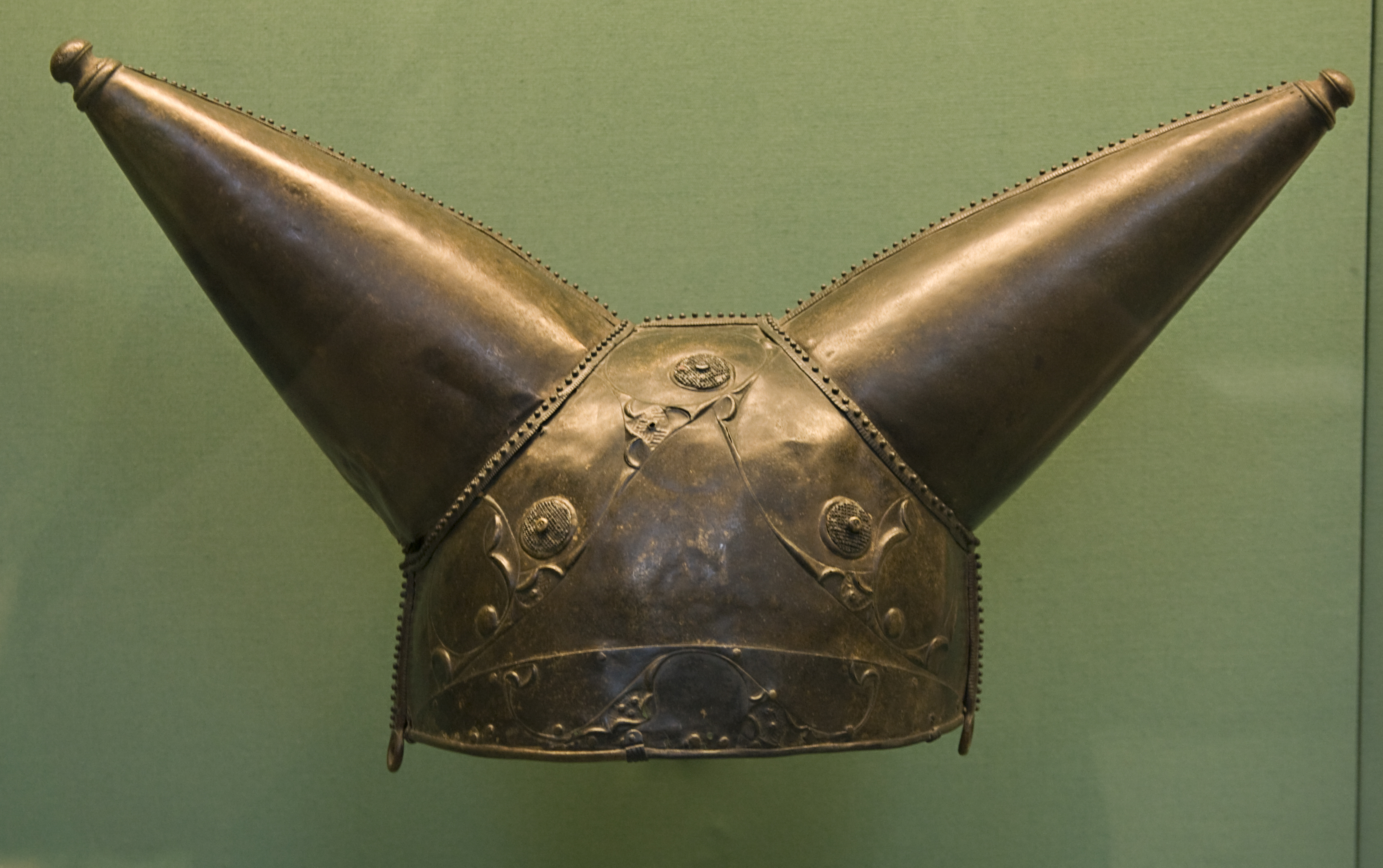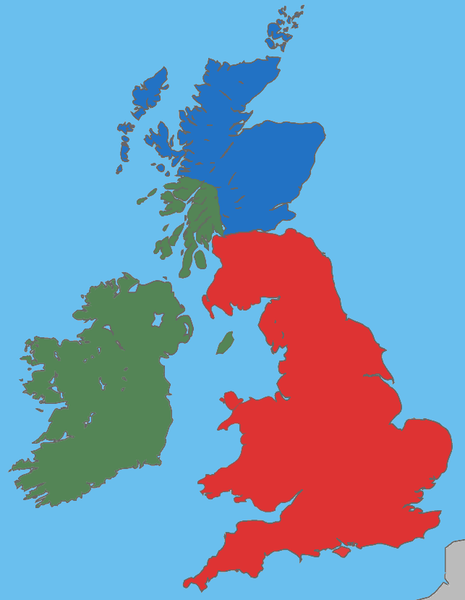 The Celtic languages constitute one of the major branches of the Indo-European family of languages in Europe. Celtic-speakers seem to have been particularly wide-spread across Northern Europe in the ancient period of Iron Age Europe. As the dominant "barbarian" groups of the Europe, various Celtic tribes first appear in early Greek histories. The Celtic speakers of Gaul were one of early Rome's major enemies. In the 390s BCE, a Gallic force defeated the Romans and sacked Rome itself.
The Celtic languages constitute one of the major branches of the Indo-European family of languages in Europe. Celtic-speakers seem to have been particularly wide-spread across Northern Europe in the ancient period of Iron Age Europe. As the dominant "barbarian" groups of the Europe, various Celtic tribes first appear in early Greek histories. The Celtic speakers of Gaul were one of early Rome's major enemies. In the 390s BCE, a Gallic force defeated the Romans and sacked Rome itself.Such Celtic preeminence gradually faded as Roman rule expanded northwards. Thanks to the Gallic Wars, in what is now France, the Roman Republic brought many Celtic-speakers under its rule. The Roman invasion of Britain incorporated the many island Celts there. The peoples in these new provinces did not immediately switch to Latin - rather a hybrid culture with Roman and Celtic elements developed -- but Celtic tribes lost their independence in these areas.
 |
| The Celts did have horned helmets. Check out those cones! |
When the Roman frontiers collapsed, the Germanic tribes mingled with Roman and Romano-Celtic populations, forming the major new post-Roman states of Europe. In the British Isles, the Anglo-Saxons seized the central areas (modern-day England). On the Continent, the Frankish kingdoms dominated what had once been Gaul.
Celtic tribes and kingdoms, however, remained, on the periphery of old areas of Roman dominance: in Brittany, and in those parts of the British Isles beyond Anglo-Saxon rule such as Wales and Cornwall. Ireland, in particular, remained beyond English control, just as it had lain beyond Roman rule.
Early Medieval Celts
Thus we can introduce the various Celtic peoples more or less as we see them in Saga: the Welsh, the Britons, and the Scots. I'll throw in some Irish, too, who, despite playing a major role in the Viking world, they are inexplicably absent from the present Saga armies.
 |
"Mainly Goidelic Goidelic areas.
Mainly Pictish Pictish areas.
Mainly Brythonic areas."
Wikipedia
|
Brittany is a peninsula extending from the coast of what is now France. As the name suggests, it was colonized from Britain, possibly including a major influx of British speakers following the Anglo-Saxon invasions. Its culture and language are thus closely related to Wales and Cornwall.
Ireland is of course a separate island, and never subject to Roman or Anglo-Saxon invasion prior to the Viking Age. The various Irish kingdoms became major Christian centers, renowned for their learned monasteries. Irish monks played a major role in Christianizing the Anglo-Saxons and even parts of Germany. The Irish language comes from the Giodelic branch, which differs from the Brythonic branch represented by Welsh Cornish or Breton.
Scotland is the modern name for the upper part of the British mainland, north of England. Scotland has a complex demographic history. The "Picts" constituted the major Roman-era inhabitants of this region north of Hadrian's Wall. The Picts seem to have spoken a language related to the other British. However, there were also "Gaels," with their own kingdom, in western regions, speaking a Giodelic version of Celtic closely related to Irish. Even though the Pictish kingdom became the dominant power, it was the Gaelic language which prevailed there. The whole issue is further confused by the centuries-later encroachment of English language and power and the resulting distinction between Lowland and Highland Scots. (Just to be extra confusing - Scots is a language/dialect related to English! Yi!) Scottish history makes my head hurt.
The Celts in the Viking Age
 The North Atlantic was the Viking highway, and they found the Celtic areas around the British Isles just as easy to reach, and just as tempting, as England or France. The Vikings settled on the coast of Caithness in Scotland and the islands of the Orkneys. Viking activity and influence are even more noticeable in Ireland -- where Norse settlements became major political players. Dublin was a Viking settlement and center of a Norse kingdom. As in other areas of Viking Settlement, there was considerable intermarriage. Irish kings and Irish slaves play major roles in the sagas -- as they did in Norse history. A DNA study of modern-day Iceland revealed a heavy component of Irish ancestry in modern Icelanders, particularly on the female side.
The North Atlantic was the Viking highway, and they found the Celtic areas around the British Isles just as easy to reach, and just as tempting, as England or France. The Vikings settled on the coast of Caithness in Scotland and the islands of the Orkneys. Viking activity and influence are even more noticeable in Ireland -- where Norse settlements became major political players. Dublin was a Viking settlement and center of a Norse kingdom. As in other areas of Viking Settlement, there was considerable intermarriage. Irish kings and Irish slaves play major roles in the sagas -- as they did in Norse history. A DNA study of modern-day Iceland revealed a heavy component of Irish ancestry in modern Icelanders, particularly on the female side.So how about those armies? Saga seems to have decided that the various Celtic kingdoms are all masters of the pokey stick, with the Welsh and Bretons liking the flingy variety and the Scots preferring the stabby kind. I'm no expert on early medieval warfare, but suspect a certain amount of exaggeration here. But that's okay. The Saga army lists and fighting styles are more about attitude than history, anyway















